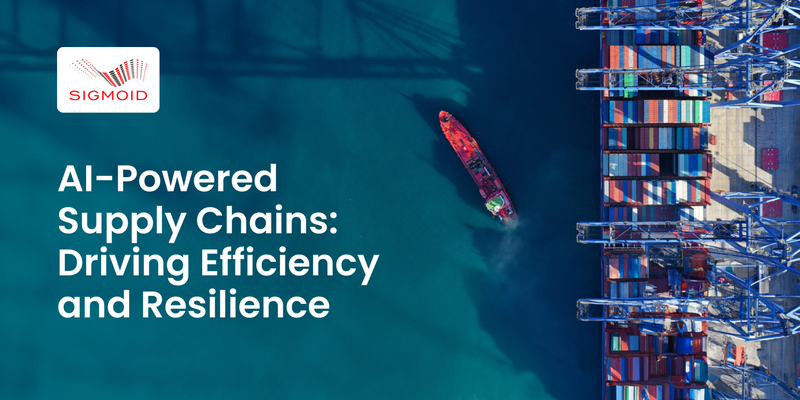
The supply chain landscape is continually evolving, shaped by globalisation, increasing product complexity, and ever-changing customer demands. Currently, the top priority for supply chain leaders and suppliers is exchanging transactional data like orders, inventory, and demand forecasts. By 2025, the emphasis would shift to exchanging information on supply chain risks and disruptions, such as traffic-related delays. To mitigate these challenges, chief supply chain officers are investing in digital connectivity to enable real-time supply chain data exchange.
Robust data for smarter supply chains
Supply chains generate vast amounts of structured and unstructured data from multiple sources, including inventory levels, logistics operations, customer demand patterns, and market trends. Many companies struggle to collect, digest and analyse these inputs efficiently. Data is most useful when collected in real time- for example, IoT sensors and RFID tags collect data on inventory levels, shipment locations, and equipment status. All these factors have led to data mesh gaining traction for its agility in managing diverse data sources and use cases, empowering enterprises to unlock data’s full potential.
“Data and analytics can enhance supply chain visibility making internal operations more efficient and enterprises better prepared to face disruptions,” states Shankar Viswanathan, Chief Commercial Officer, Sigmoid. With over a decade of experience providing data engineering and AI solutions globally, Sigmoid understands the pivotal role of data. “Sigmoid helps companies create an approach to data that continuously channels real-time information from suppliers, warehouses, and stores to analytics for instant insights that enable immediate, informed action”, said Shankar.
Supply chain control towers for visibility
End-to-end visibility in supply chain management is crucial for optimising various aspects such as freight reconciliation, procurement, or logistics management. A supply chain control tower enhances this by providing real-time monitoring and insights, enabling companies to make informed decisions and improve efficiency. Case in point: Sigmoid helped a leading Fortune 500 company leverage a supply chain data platform with a control tower to integrate internal and external data from partner ecosystems in real time to monitor KPIs. By gaining enhanced visibility of their end-to-end supply chain, the client achieved a 10% cost reduction through streamlined freight reconciliation.
“At Sigmoid, we’ve closely observed and contributed to supply chain improvement initiatives, which have become a boardroom conversation for some of our largest Fortune 500 customers. While an organisation’s native planning and execution systems still provide value, we work with customers to deliver cross-enterprise robust data and AI foundation layer which keeps all these systems in check and ensures they work together as a well-oiled machine” said Rahul Singh, Chief Analytics Officer and Co-Founder at Sigmoid.
Effective data sharing is critical to supply chain management and optimization. IoT sensors monitoring assets, inventory, and environmental conditions across the supply network also enable end-to-end transparency. This enhanced visibility helps in early identification of potential risks while enabling practices like route optimisation, regulatory compliance adherence, and quality assurance – critical capabilities for mitigating disruptions. In one such instance, Sigmoid helped a leading American food manufacturer improve access to cross-functional data through a data mesh-based platform leading to a 15% reduction in inventory costs. The decentralised access to data provided higher visibility and real-time insights to identify potential supply chain disruptions.
Generative AI is a game-changer
Modern supply chains are no longer linear; they’re intricate networks entwined with product options and global suppliers. To mitigate disruptions, it’s essential to quickly analyse data from both internal and external sources to uncover patterns and areas for improvement. Embedding generative AI in supply chains and other business processes can achieve this. Some examples of GenAI applications in supply chain management are:
1. Creating accurate demand forecasts using historical data, market trends, and external factors to optimize inventory and reduce stockouts.
2. Conducting risk assessments, scenario simulations, and mitigation strategies to help planners proactively manage risks.
3. Analyzing supplier performance data to assist in selecting suppliers based on cost, quality, lead time, and location.
“By integrating human decision-making with generative AI and deep learning, we co-create innovative solutions for our clients. Our suite of accelerators – demand forecasting, supply chain control tower, network design optimization, and GenAI framework for supply chain empowers enterprises with real-time visibility, monitoring, and streamlined processes for transformative supply chain management”, said Rahul.
Data analytics and AI are critical enablers, empowering organisations to build resilient, agile, and interconnected supply chains. In today’s volatile market, enterprises need strong data analytics partners for end-to-end supply chain management and optimization. With predictive analytics, generative AI-driven accelerators, and deep domain expertise, businesses can navigate global challenges, streamline processes, and transform supply chains into key drivers of sustainable growth and operational excellence.










